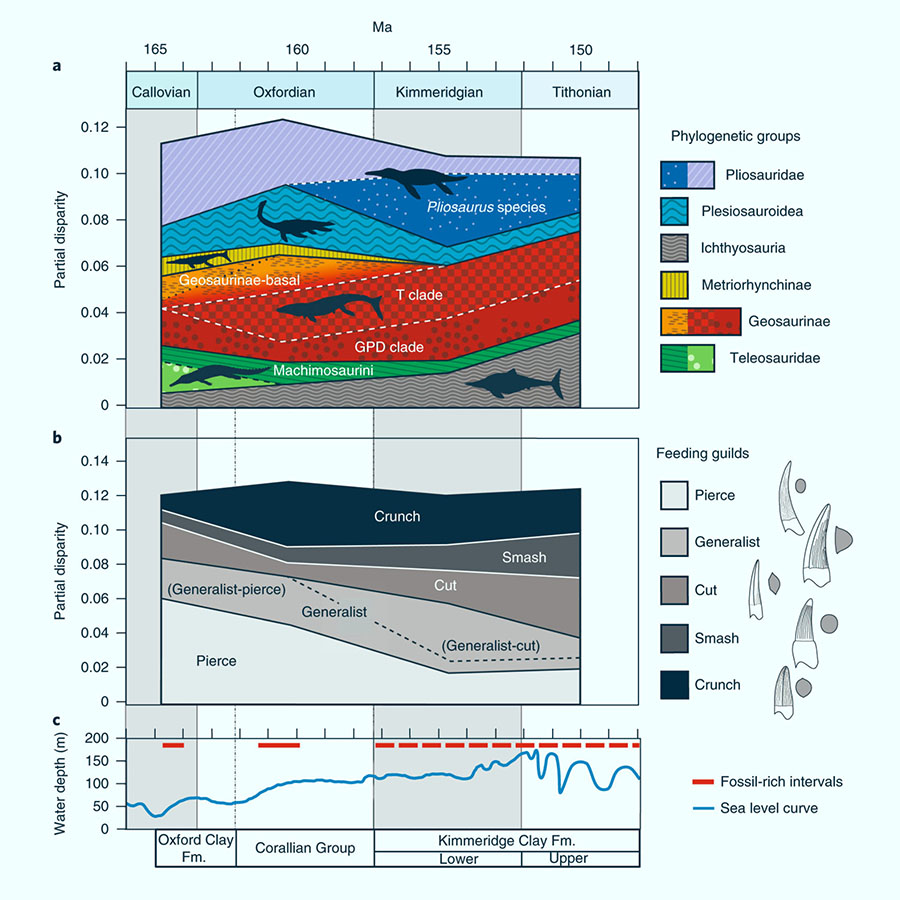Fossil Teeth Study Sheds Light on How Jurassic Marine Reptiles Adapted to Environmental Changes

Jurassic deep-water reptiles thrived as sea levels rose, while species that dwelled in the shallows waters disappeared, according to new research from the University of Edinburgh.
For more than 18 million years, diverse reptile species lived together in a single seaway called the Jurassic Sub-Boreal Seaway of the United Kingdom.
Until now, however, little was known about the structure of the food chain in this region or how it changed as sea levels rose.
By analyzing the shape and size of teeth spanning this period when water levels fluctuated, University of Edinburgh paleontologist Davide Foffa and colleagues found that species belonged to one of five groups based on their teeth, diet and which part of the ocean they inhabited.
The pattern is very similar to the food chain structure of modern oceans, where many different species are able to co-exist in the same area because they do not compete for the same resources.
“Studying the evolution of these animals was a real — and rare — treat, and has offered a simple yet powerful explanation for why some species declined as others prospered,” Foffa said.
“Teeth are humble fossils, but they reveal a grand story of how sea reptiles evolved over millions of years as their environments changed,” added co-author Dr. Steve Brusatte, also from the University of Edinburgh.
“Changes in these Jurassic reptiles parallel changes in dolphins and other marine species that are occurring today as sea-levels rise, which speaks to how important fossils are for understanding our modern world.”

As global sea levels rose, Jurassic reptiles that lived in shallow waters and caught fish using thin, piercing teeth declined drastically, the team found.
At the same time, larger species that inhabited deeper, open waters began to thrive. These reptiles had broader teeth for crunching and cutting prey.
“Deep-water species may have flourished as a result of major changes in ocean temperature and chemical make-up that also took place during the period,” the researchers said.
“This could have increased levels of nutrients and prey in deep waters, benefiting species that lived there.”
The findings were published online in the journal Nature Ecology & Evolution.
_____
Davide Foffa et al. The long-term ecology and evolution of marine reptiles in a Jurassic seaway. Nature Ecology & Evolution, published online September 3, 2018; doi: 10.1038/s41559-018-0656-6
Source: www.sci-news.com








